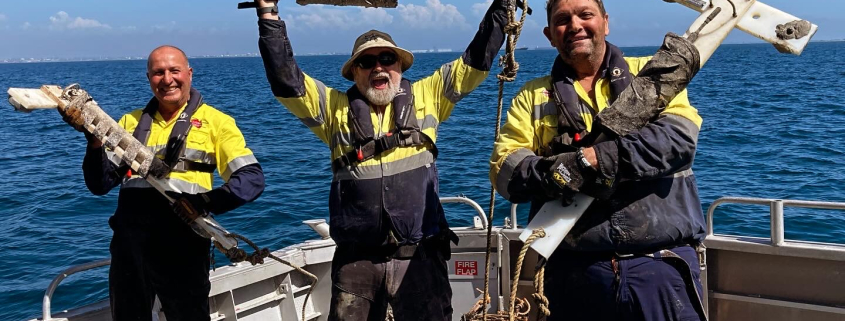The messy, muddy work retrieving recorders from the sea floor
They are moments of excitement mixed with relief when researchers pull up their mud and weed covered hydrophones and recorders which have spent months on the seafloor quietly capturing the sounds of weather, marine life, boats and ships.
The equipment used for the ‘Noise’ theme project in the WAMSI Westport Marine Science Program was put out three times over a year in Cockburn Sound and left under water for four months.
The research team carefully noted the coordinates of the devices when they lowered them under water and connected them by rope to weights to stop them drifting.
The underwater recorders contain enough batteries to sustain them through the months of data collection and are built to withstand the pressures of saltwater, sediment and sometimes rough weather conditions.
Because of the boating and fishing activity in Cockburn Sound the team decided not to attach the devices to floats which would increase the possibility of ropes becoming snagged in propellers.
When it comes time to retrieve the devices, the team takes its boat to the drop sites using the GPS coordinates and uses a hook to grab the line. It can feel like looking for a needle in a haystack.
When they are found, the recorders are usually covered in mud and some are tangled in seagrass but once they are cleaned the precious data is retrieved.
What’s downloaded are the sounds of the Sound. There are wind and bubbles, jet skis, boats, large ships but also fish, dolphins, crabs and many noisy shrimp.

